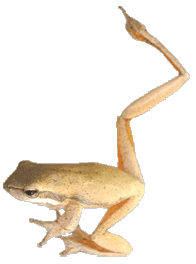What are Protostomes?
 Michael Anissimov
Michael Anissimov
Protostomes (Greek: mouth first) are a huge clade of animals that includes the Ecdysozoans (arthropods, nematodes, and friends), Platyzoa (flatworms and allies), and Lophotrochozoa (molluscs, annelids, and allies). Their counterpart, the deuterostomes, includes the chordates, hemichordates, and echinoderms. There are many differences between the two groups, which make up all bilateral animals, but the most frequently mentioned is that the mouth is formed in the embryo first, rather than the anus. This is a pretty fundamental difference.
Another difference between protostomes and deuterostomes is that in protostomes the embryo displays spiral cleavage, where the position of each cell is deterministic. In deuterostomes, which display radial cleavage, there is less certainty in where differentiated cells ultimately end up. The protostomes' embryological development might therefore be considered relatively conservative and predictable. Unsurprisingly, protostomes encompass the world's simplest animals, including the earliest bilateral animals to appear in the fossil record, such as arthropods and molluscs.

When it comes to species count, protostomes win over deuterostomes. While there are many millions of protostome species, especially thanks to phylum Arthropoda, there are only about 70,000 species of deuterostomes, though these encompass all fairly complex animals. Protostomes encompass all simple animals, but their abundance is a testimony to their success. Ignoring fish and whales, protostomes make up the majority of biomass in the world's oceans, though they are less dominant on land, where the vertebrate body plan has proven highly successful. The suspension qualities of water make a spinal column much less necessary.
Protostomes and deuterostomes are thought to have split at least 558 million years ago, and possibly much earlier. This is inferred by the existence of Kimberella, a primitive mollusk, 555 million years ago, which is a known protostome. However, just because Kimberella existed at the time, why does that mean that deuterostomes didn't evolve later, branching off from protostomes? There is little solid consensus on the subject, but apparently some Late Ediacaran (older than 542 million years) fossils, Ernettia, have a likely deuterostome affinity, though consensus on the classification of Ediacaran fossils is frequently absent. In any case, it is certain that protostomes and deuterostomes had separated by the dawn of the Cambrian, 542 million years ago.
AS FEATURED ON:
AS FEATURED ON:











Discussion Comments
@elizabeth23 - You are partially correct. While "proto" is the Greek for "first", "stoma" (or its plural, "stomes") is the Greek word for "mouth". Thus, the Greek naming of these two is dictated by whether the mouth of the animal developed first (the protostomes) or second (the deuterostomes).
In Greek, "proto" means first, while "deutero" means second. The naming, at least, suggests that protostomes might be the older or more dominant when comparing protostomes vs deuterostomes, although maybe this naming also comes from the fact that there are more species of protostome.
Post your comments